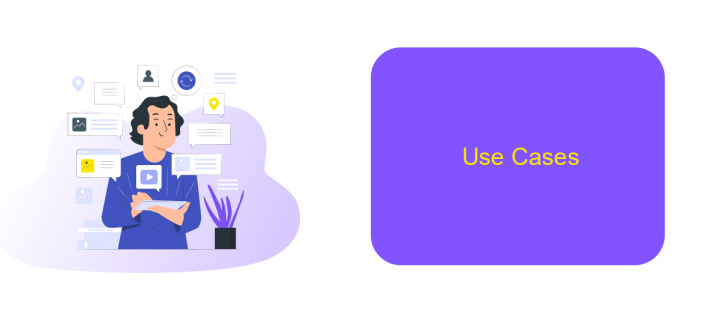MuleSoft Vs SAP Cloud Platform Integration
When it comes to enterprise integration, choosing the right platform is crucial for seamless data flow and operational efficiency. MuleSoft and SAP Cloud Platform Integration are two leading solutions that offer robust capabilities. This article delves into a comparative analysis of these platforms, examining their features, benefits, and potential drawbacks to help businesses make an informed decision.
Introduction
In today's rapidly evolving digital landscape, businesses are increasingly relying on integration platforms to streamline their operations and achieve seamless data flow across various applications. MuleSoft and SAP Cloud Platform Integration are two prominent solutions that offer robust capabilities for connecting disparate systems. Both platforms provide unique features and benefits, making it crucial for organizations to understand their differences and choose the right one for their needs.
- MuleSoft: Known for its extensive connectivity options and API-led approach.
- SAP Cloud Platform Integration: Offers deep integration with SAP products and a user-friendly interface.
- ApiX-Drive: A versatile tool that simplifies the integration process and enhances automation.
Choosing the right integration platform requires a thorough understanding of your organization's specific requirements and the strengths of each solution. MuleSoft excels in providing a wide range of connectors and a strong API management framework, while SAP Cloud Platform Integration is ideal for those heavily invested in SAP's ecosystem. Additionally, tools like ApiX-Drive can further streamline the integration process, offering a more efficient and automated approach to managing data flows.
Key Features

MuleSoft offers a robust set of features designed to streamline integration processes. Its Anypoint Platform provides a unified solution for API management, design, and implementation, allowing businesses to connect applications, data, and devices seamlessly. The platform's pre-built connectors and templates accelerate integration, reducing the time and resources needed for deployment. MuleSoft also emphasizes security, offering end-to-end encryption and compliance with industry standards. Additionally, its user-friendly interface and comprehensive analytics tools enable efficient monitoring and management of integrations.
SAP Cloud Platform Integration (CPI) is tailored for enterprises seeking to integrate SAP and non-SAP applications. It offers out-of-the-box integration content and pre-packaged scenarios, which facilitate quick and efficient deployment. SAP CPI supports a wide range of protocols and provides extensive monitoring and error-handling capabilities. One of its key features is the seamless integration with other SAP services, ensuring a cohesive ecosystem. The platform also emphasizes scalability and flexibility, allowing businesses to adapt their integration strategies as they grow. For those looking to simplify integration tasks further, services like ApiX-Drive can be utilized to automate and manage data flows efficiently.
Benefits and Drawbacks

When comparing MuleSoft and SAP Cloud Platform Integration, both platforms offer unique benefits and drawbacks for businesses looking to streamline their integration processes.
- MuleSoft:
- Benefits: Highly flexible, supports a wide range of protocols and APIs, strong community support, and extensive documentation.
- Drawbacks: Can be complex to set up, higher cost, and may require specialized skills for effective use.
- SAP Cloud Platform Integration:
- Benefits: Seamless integration with other SAP products, user-friendly interface, and robust security features.
- Drawbacks: Limited to SAP ecosystem, less flexibility in customization, and can be expensive for smaller businesses.
Both platforms have their strengths and weaknesses, making the choice dependent on specific business needs. For companies looking for a more straightforward integration solution, services like ApiX-Drive can provide an easier setup and management of integrations without the need for extensive technical expertise.
Use Cases

MuleSoft and SAP Cloud Platform Integration serve different yet overlapping use cases in the realm of enterprise integration. MuleSoft is renowned for its ability to connect a wide array of applications, data, and devices, making it a versatile tool for complex integration scenarios. On the other hand, SAP Cloud Platform Integration is tailored for SAP environments, offering seamless integration with SAP applications and services.
Both platforms excel in automating business processes, improving data flow, and enhancing operational efficiency. However, the choice between them often depends on the specific needs and existing infrastructure of the organization. For instance, businesses heavily invested in SAP products may find SAP Cloud Platform Integration more beneficial due to its innate compatibility.
- Connecting disparate systems and applications
- Automating data synchronization and workflows
- Enhancing real-time data visibility and analytics
- Streamlining business processes across various departments
In addition to these platforms, services like ApiX-Drive can further simplify the integration process. ApiX-Drive offers an intuitive interface for setting up integrations without extensive coding, making it a valuable tool for businesses looking to quickly and efficiently connect their systems.
Conclusion
In conclusion, both MuleSoft and SAP Cloud Platform Integration offer robust capabilities for enterprise integration needs. MuleSoft stands out with its extensive API management and developer-friendly environment, making it a preferred choice for organizations that require flexibility and scalability. On the other hand, SAP Cloud Platform Integration excels in seamless integration with SAP applications, providing a cohesive ecosystem for businesses already invested in SAP solutions.
When choosing between these platforms, organizations should consider their specific requirements, existing infrastructure, and long-term integration strategies. Additionally, leveraging integration services like ApiX-Drive can further streamline the process, offering automated workflows and easy setup for various applications. Ultimately, the right choice depends on aligning the platform's strengths with the company's integration goals and technical landscape.


FAQ
What are the primary differences between MuleSoft and SAP Cloud Platform Integration (CPI)?
Which platform is better for integrating non-SAP systems?
How do both platforms handle API management?
Is it easier to implement MuleSoft or SAP CPI for an organization already using SAP products?
Can I use third-party services to assist with the integration process for both platforms?
Apix-Drive is a universal tool that will quickly streamline any workflow, freeing you from routine and possible financial losses. Try ApiX-Drive in action and see how useful it is for you personally. In the meantime, when you are setting up connections between systems, think about where you are investing your free time, because now you will have much more of it.

